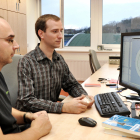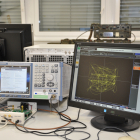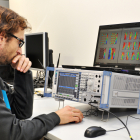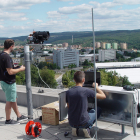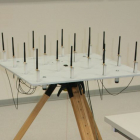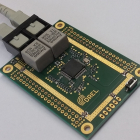Main R&D areas
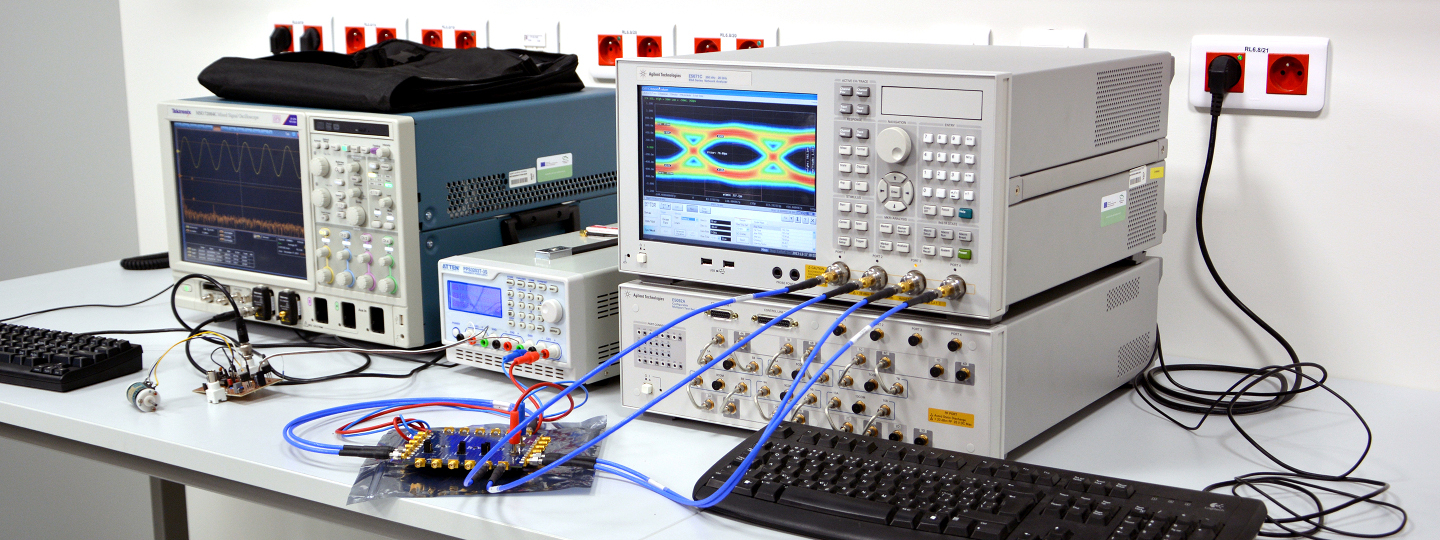
The Department of Radio Electronics is involved in a number of research projects in the field of basic and applied research as well as direct contracts for national and international companies. We are involved in complex radio frequency and microwave circuit design, design and optimization of antennas and their systems, and EMC measurements. We address the design of analogue and digital electronic circuits and systems, applications in the areas of satellite and space technology, wireless communications in the mobile environment between vehicles and infrastructure, as well as optical communication systems. These problems are addressed by experts from the following working groups.
Applied Electromagnetism Research Group
Our researchers work in two main areas: modelling electromagnetic fields and microwave structures. In the first area, research is focused on developing methods for modelling antennas and EMC problems, developing variable-dimensional optimisation algorithms, and developing methods for identifying source currents in animal brains. As far as microwave structures are concerned, we mainly focus on the design of original circuit concepts and antennas for centimetre and millimetre wave bands realized on both traditional and non-traditional (e.g. textiles, paper) microwave materials.
Wireless Coexistence Research Group
Our area of expertise is the coexistence of broadcast, mobile and general wireless services in shared or nearby frequency bands. Our group of researchers is active in both theoretical and experimental methodologies for coexistence within and outside the systems themselves, as well as in the interaction of systems and subsystems of communication devices, and in frequency planning or modelling of critical and non-critical coexistence scenarios.
Mobile Wireless Communications Research Group
The subject of our research is mainly the topic of perspective mobile communication systems. Our scientists are active in research of new modulation techniques, signal processing methods for mobile communication receivers and design of physical layer parameters. An important direction of our activity is also the design of algorithms to compensate for imperfections in the elements of the radio communication chain. Considering the future requirements for high mobility of devices, our attention is also focused on communication between moving users.
Optical Communications Research Group - OptaBro
The OptaBro group is researching cable-free optical links with a focus on all-photonic communication systems and VLC (Visible Light Communication) systems. Currently, the OptaBro group's research is focused on the application of fully photonic systems for the transmission of precision timing signals using adaptive optics technology. Our team of researchers is working on the functional blocks of the transmitter and receiver units of the communication chain, from their development, through testing to implementation in cable-free optical links. In addition, we are involved in the measurement and modelling of the atmospheric transmission environment in the optical spectral region, with an emphasis on coherent optical waves. Last but not least, our specialists are researching the optimal intensity profile of the optical beam to minimize the negative effects of the transmission medium on the transmitted information.
Radio Frequency and Cable-Free Optical Systems Research Group
Our scientists are mainly involved in the measurement, modelling and analysis of transmission channels in the millimetre wave and infrared bands. One of the sub-areas of our research is the measurement and modelling of channels in the time and frequency domain, with the aim of creating a simulation tool describing the propagation of signals for future 5G systems. We are also investigating modulation techniques in the VLC domain and the application of fully photonic systems for the transmission of precise time signals using adaptive optics technologies. These activities are being pursued by a sub-research group focused on the analysis and applications of analogue and digital systems. It is also involved in research and development on the application of advanced active blocks and their computer modelling, nonlinear dynamical systems and chaos theory.
Special Electronics and Embedded Systems Group
The group is engaged in the development of specialized instruments. We design equipment for aerospace, automotive, nuclear power, space applications, and have experience in the development of instruments for ionizing radiation measurement, radar, optoelectronics, control and regulation. We use modern ARM microcontrollers (STM32, LPC, NRF51/52, TM4C) and FPGA gate arrays (mainly Xilinx Zynq) for device implementation. In the field of wireless communication interfaces we use GSM/LTE, LoRaWAN, RFID, WiFi, Bluetooth, ANT and proprietary communication in ISM bands. We develop devices with an emphasis on electromagnetic compatibility and have a chamber for EMC pre-certification measurements.
